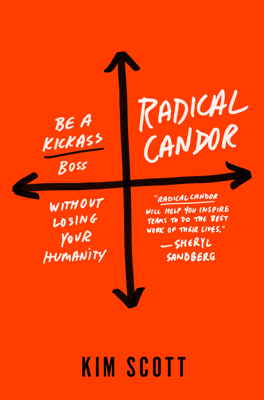Results: Things you can do to get stuff done together—faster
The Goal of Radical Candor
- Achieving Collaborative Results: The ultimate purpose of Radical Candor is to achieve results together that couldn't be reached individually. When a team adopts the ethos of caring personally and challenging directly, it becomes more efficient and can often resolve issues proactively.
Optimizing Communication and Meeting Structure
Types of Meetings
- 1:1 Conversations: Focus on understanding team members' perspectives, problems, and ambitions. These meetings are essential for maintaining open communication and deepening personal engagement.
- Staff Meetings: Utilized for reviewing metrics, sharing updates, and identifying key decisions for the week.
- "Big Debate" Meetings: Dedicated to debating major issues without making instantaneous decisions, thus creating a culture of thoughtful decision-making.
- "Big Decision" Meetings: Follow-up meetings where crucial decisions are finalized, promoting a sense of inclusion and transparency in decision-making processes.
- All-Hands Meetings: Serve to align larger teams or the whole company on recent decisions and company direction, fostering unity and addressing potential concerns across the board.
- Think Time: Scheduled blocks designed for leaders to reflect and strategize without interruptions, ensuring thoughtful leadership and proactive management.
- Meeting-Free Zones: Designated times intended to reduce meeting fatigue and enhance productivity.
- Kanban Boards: Visual tools that track tasks across stages (To Do, In Progress, Done) to increase visibility of workflow and accountability.
- Walk Around: Casual, spontaneous interactions that help leaders stay connected with ground-level issues and team morale.
Meeting Objectives
- Each meeting type serves to streamline communications and ensure that critical information is shared and understood across all levels of the team without overwhelming the schedules.
Effective Leadership Through Routine Interactions
- Importance of Routine: Regular and structured interactions, such as walking around and engaging with team members informally, help leaders catch minor problems before they escalate into major issues.
Influence of Leadership on Team Culture
- Leadership Scrutiny: Leaders are highly observed and even minor actions or comments can significantly influence team dynamics and decision-making.
- Explicit and Implicit Messaging: Leaders must be aware of the impact of their actions and communications, both intended and unintended, to maintain a positive and effective team culture.
Strategic Cultural Influence
- Leaders should consciously use their visibility to reinforce the desired team culture through regular feedback, transparent decision-making processes, and leading by example in everyday situations.
Conclusion
- The chapter emphasizes that achieving superior results is not solely about the volume of meetings or discussions, but about the quality of these interactions and the strategic use of various meeting types to foster a collaborative and transparent work culture. This enables teams to achieve more than the sum of their parts through a thoughtful blend of guidance, debate, and decisive action.
